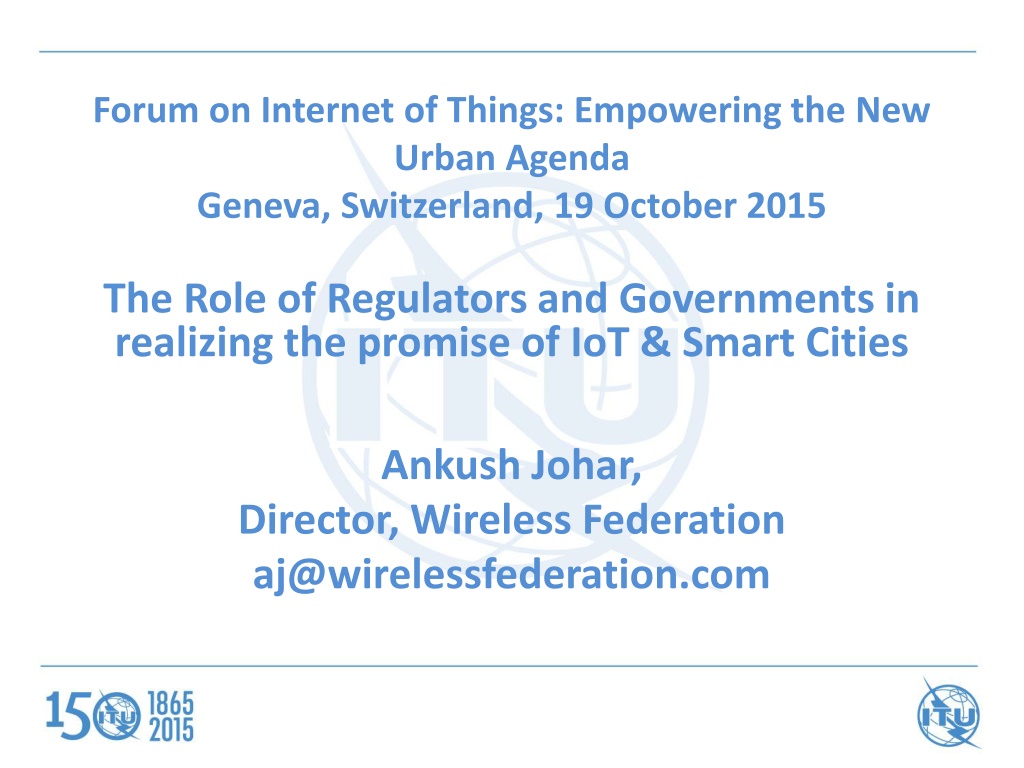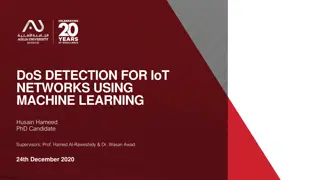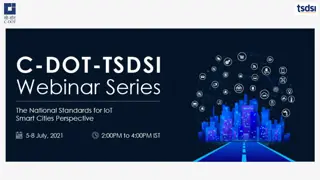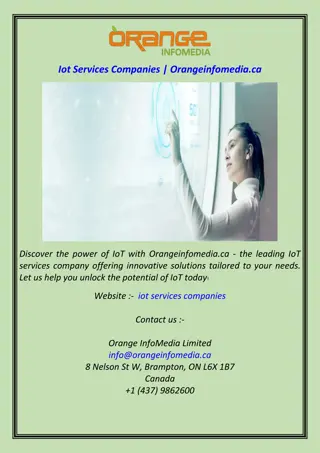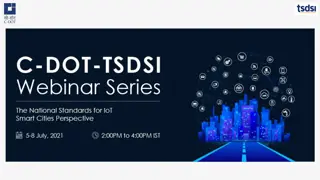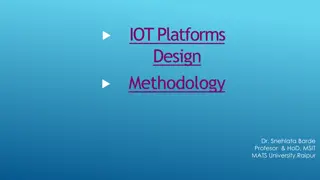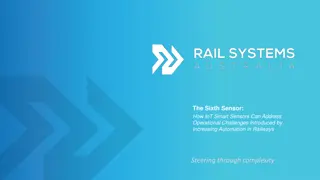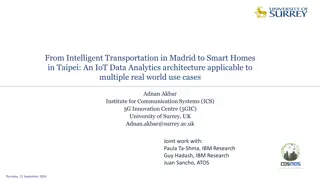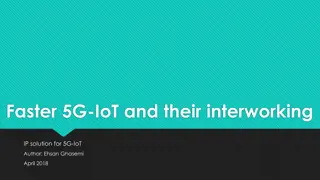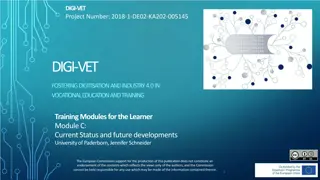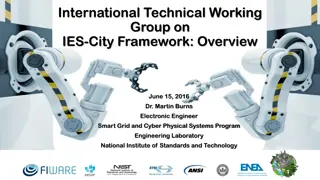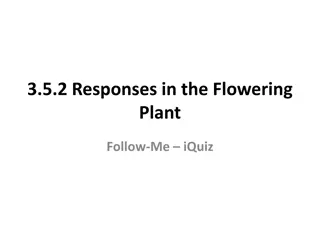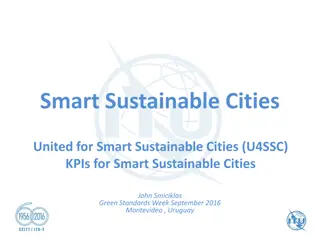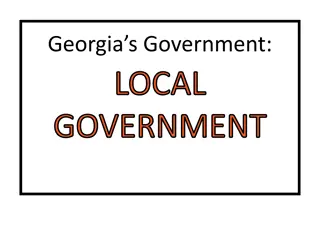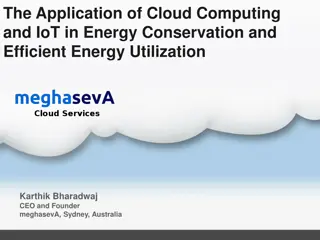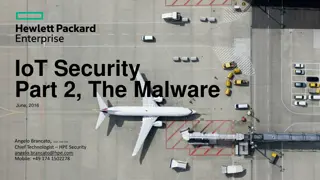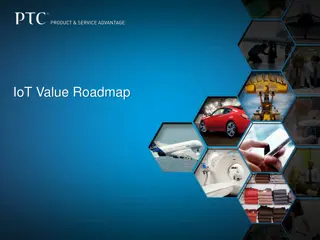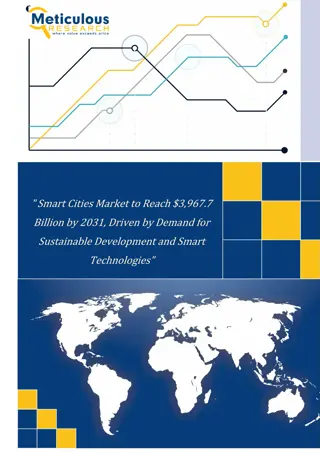Role of Regulators and Governments in IoT & Smart Cities
Explores the pivotal role of regulators and governments in advancing the potential of Internet of Things (IoT) and Smart Cities. The talk by Ankush Johar, Director of Wireless Federation, delves into empowering the new urban agenda through regulatory frameworks and governmental initiatives. The session, held in Geneva, Switzerland, on October 19, 2015, sheds light on key strategies for realizing the promises of IoT technologies in urban environments.
Download Presentation

Please find below an Image/Link to download the presentation.
The content on the website is provided AS IS for your information and personal use only. It may not be sold, licensed, or shared on other websites without obtaining consent from the author. Download presentation by click this link. If you encounter any issues during the download, it is possible that the publisher has removed the file from their server.
E N D
Presentation Transcript
Forum on Internet of Things: Empowering the New Urban Agenda Geneva, Switzerland, 19 October 2015 The Role of Regulators and Governments in realizing the promise of IoT & Smart Cities Ankush Johar, Director, Wireless Federation aj@wirelessfederation.com
Index 1. The compelling need for Smart Cities 2. A Pragmatic approach to achieving Smart Cities 3. Key Challenges & Roles of Regulators/Governments 4. Government & Regulatory Focus 5. Case Examples 6. Conclusions
Need for Smart Cities Urban Population is booming: 1950 - 30% 1990 - 43% 2014 - 54% 2050 - 66% It was 746 million in 1950 to 3.9 billion in 2014. The world s urban population is expected to surpass 6 billion by 2045 There is no choice but to have Smart Cities! http://esa.un.org/unpd/wup/Highlights/WUP2014-Highlights.pdf
Pragmatic Approach to Smart Cities FROM TO WHAT TO DO? Innovative and Collaborative new models that connect these vertical silos. Nurture Open Data platforms, that utilise Smart Data as an asset in its own right, to create citizen centric innovations, driven & managed by Smart City Stakeholder Groups can best address any city s challenges and opportunities. Closed vertical silos of functionally- oriented service providers & Un-connected GUIDING PRINCIPLES SERVICE MANAGEMENT BUSINESS MANAGEMENT 1. 2. 3. 4. 5. Visionary Citizen focussed Digital Open Collaborative TECH. & DIGITAL ASSET MGMT. ENVIRO SVCS ENVIRO SVCS SOCIAL SVCS SOCIAL SVCS TRANSPORT TRANSPORT EDUCATION EDUCATION ECONOMY ECONOMY TELECOM TELECOM POLICING HOUSING HOUSING POLICING ENERGY ENERGY HEALTH HEALTH WATER WATER WASTE WASTE
Key Players in the IoT Ecosystem Regulators/Government Telecom Operators Customers/Consumers Standards Bodies/Industry Groups Hardware Vendors Software Vendors Middleware Vendors IT Service Vendors Cloud Service Providers
Key Challenges & Roles for Regulators/Government 1. Security Risks Studies Reveal 70% Of IOT Devices Are Vulnerable To Attack. Google s Nest is hackable*! Data Privacy Right To Be Forgotten - European Commission Ruling Data Sovereignty And Data Residency With IOT, physical borders between countries have become porous Govts. now need to subpoena data physically located in another country Example: A large organisation had to setup a new Datacenter based out of Canada in response to data sovereignty issues Spectrum Licensing Dedicated Spectrum vs. Shared Spectrum framework based on requirements of IOT devices Utilize Unused White Space Spectrum Radio signals have propagation characteristics that make them suitable for travelling long distances and through buildings apt for IOT deployments Eg. Ofcom Approves White Space Spectrum For IOT Network 2. 3. 4. 5.
Key Challenges & Roles for Regulators/Government 6. Numbering Systems No notable efforts yet to create a universal numbering system for IOT devices If the number of IoT devices is to touch over 50Bn then there is an imminent need for this. KYC Requirements Removes the flexibility of selling pre-activated off-the-shelf IOT and M2M devices KYC leniency is required from regulators for IOT device proliferation Taxation Schemes Impact of SIM Activation Tax - Reforms For IOT & M2M In Brazil & Turkey How revenues from IOT services provided by international companies need to be taxed? Permanent Roaming/ National Roaming The ability to offer services globally is critical for many IOT verticals - including automotive and consumer electronics Embedded/Soft SIMs and other disruptions are important considerations. 7. 8. 9.
Government & Regulatory Focus 1. Promote Competition & Investment Spectrum Licensing Numbering Systems KYC Requirements Taxation Schemes Permanent Roaming Regulations 2. Implement Standardization & Interoperability Framework for IOT in the region 3. Empower & Protect the End User Security Risks Data Privacy Data Sovereignty & Data Residency 4. Promote the Internal Market Legislations that make certain connected services mandatory, eg. Smart Metering, Connected Cars, Traffic Management, Health, etc.
Examples Of Legislations That Create IOT Opportunities Smart Energy & Metering legislations UK s Smart Metering Initiative: The initiative plans to cover every consumer and business in the UK by 2020 this involves replacing over 53 million meters, and provide 6.2 billion in net benefits by 2030 Ontario s Smart Metering Initiative The key objective was to install new smart electricity meters throughout the province to measure both how much and when electricity is used in order to introduce time-of-use (TOU) pricing to encourage consumers to shift their electricity use to times of lower demand and pricing Connected Car legislations EU s eCall Initiative: eCall is an European Commission initiative, making mandatory the deployment of internet-connected sensors into cars that enable emergency services to be immediately contacted and requested automatically after a serious road incident within the EU Smart Traffic Management legislations Singapore s Smart Mobility 2030 Initiative: The initiative covers a range of connected and interactive land transport services that are driven by legislations Many more examples
BARCELONA: $3.6 Bn Value Creation Mobile collaboration: $1.6 Bn Telework: $199 Mn Smart Parking: $67 Mn Smart Water: $56 Mn Smart Lighting: $47 Mn 56,000 Jobs
